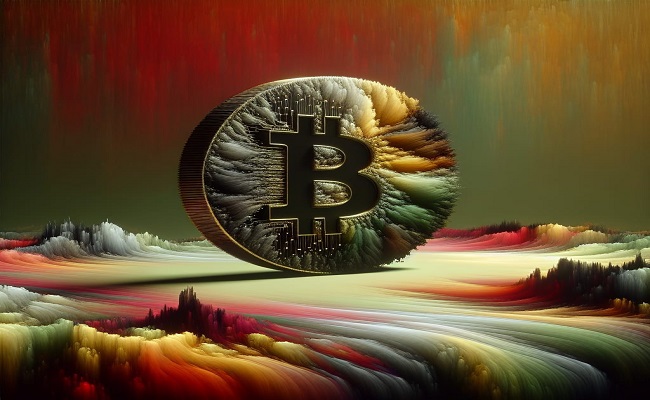In current years, a brand new art movement has emerged, remodeling traditional art globally and reshaping the idea of possession and value in the virtual age. Crypto artwork, also known as blockchain art or NFT art (Non-Fungible Token artwork), has won full-size traction, permitting artists to tokenize and monetize their virtual creations using blockchain generation.
In this article, we delve into the upward thrust of crypto artwork, its effect on the artwork market, and the opportunities it affords for artists and creditors. Give yourself a chance and click Immediate Nextgen to learn about investing from professionals. Get started with learning now!
The Emergence of Crypto Art:
Crypto art represents a paradigm shift in the manner in which we perceive and interact with art within the virtual realm. It encompasses a multitude of virtual artworks, together with illustrations, animations, digital sculptures, and interactive installations, which are tokenized as non-fungible tokens (NFTs) on blockchain networks like Ethereum. NFTs offer a precise virtual certificate of ownership, ensuring shortage, provenance, and authenticity for every piece of crypto art.
Tokenizing Creativity:
By tokenizing their works of art as NFTs, artists can set up verifiable possession and traceability for their digital creations, stopping unauthorized duplication and making sure of fair reimbursement for their work. Each NFT acts as a digital certificate of authenticity, permitting collectors to show ownership of a unique, one-of-a-kind piece of artwork. Moreover, NFTs allow artists to embed royalties on their tokens, ensuring that they get a percentage of any future resale of their artworks.
The Role of Blockchain Technology:
The blockchain era underpins the crypto artwork movement, imparting a transparent, immutable, and decentralized infrastructure for the introduction, distribution, and buying and selling of digital works of art. Blockchain networks like Ethereum enable artists to mint NFTs, create smart contracts, and interact with decentralized marketplaces and systems where collectors can buy and sell crypto art. The use of blockchain ensures acceptance, safety, and censorship resistance inside the crypto art environment.
Exploring Cultural Expression:
Crypto artwork transcends geographical and cultural limitations, providing artists with an international platform to express their creativity, ideas, and identities. Artists can experiment with new mediums, techniques, and styles within the digital realm, exploring issues such as identity, social justice, environmentalism, and technology. Crypto artwork reflects the numerous perspectives and studies of artists from around the sector, fostering cross-cultural dialogue and knowledge within the digital age.
Collecting and Investing in Crypto Art:
For collectors, crypto artwork offers a unique and interesting possibility to acquire unique virtual works of art and support rising artists. Collectors can browse decentralized marketplaces and galleries to discover and purchase NFTs directly from artists or secondary markets. Additionally, creditors can view and display their crypto artwork collections in virtual galleries and metaverse platforms, creating immersive and interactive stories that blur the boundaries between physical and virtual artwork.
Impact on the Art Market:
The upward push of crypto art has disrupted the traditional artwork marketplace, creating difficult-to-setup norms and hierarchies within the artwork internationally. Digital artists who have been previously marginalized or omitted by traditional galleries and institutions now have a rightful direction for audiences and creditors through decentralized systems. Moreover, crypto artwork has democratized the art market, allowing artists to preserve more control over their work, pricing, and distribution while also expanding the pool of potential customers and collectors.
Challenges and Considerations:
While crypto artwork provides interesting possibilities, it also poses challenges and considerations for artists, creditors, and the broader artwork community. Issues such as copyright infringement, plagiarism, and highbrow property disputes require careful attention and legal frameworks to shield artists' rights and interests. Additionally, the environmental impact of blockchain networks, mainly in terms of energy consumption, increases concerns about sustainability and ecological duty within the crypto artwork environment.
The Future of Crypto Art:
As the crypto art movement continues to adapt, we can count on peer innovation, experimentation, and boom inside the virtual artwork space. Artists will discover new technologies, mediums, and codecs to push the boundaries of creativity and expression in the virtual realm. Collectors will include digital possession and immersive studies, while platforms and marketplaces will strive to beautify user enjoyment, interoperability, and sustainability within the crypto art environment.
Conclusion:
The rise of crypto artwork represents a transformative shift in the art world, democratizing the right of art entry, empowering artists, and redefining notions of possession and cost in the virtual age. As blockchain technology continues to mature and evolve, crypto artwork will play an increasingly outstanding role in cultural expression, creativity, and innovation, shaping the destiny of art and lifestyle within the digital era. Whether you are an artist, collector, or fanatic, the sector of crypto art offers a colorful and dynamic panorama to explore, find out about, and engage with virtual creativity and cultural expression.
